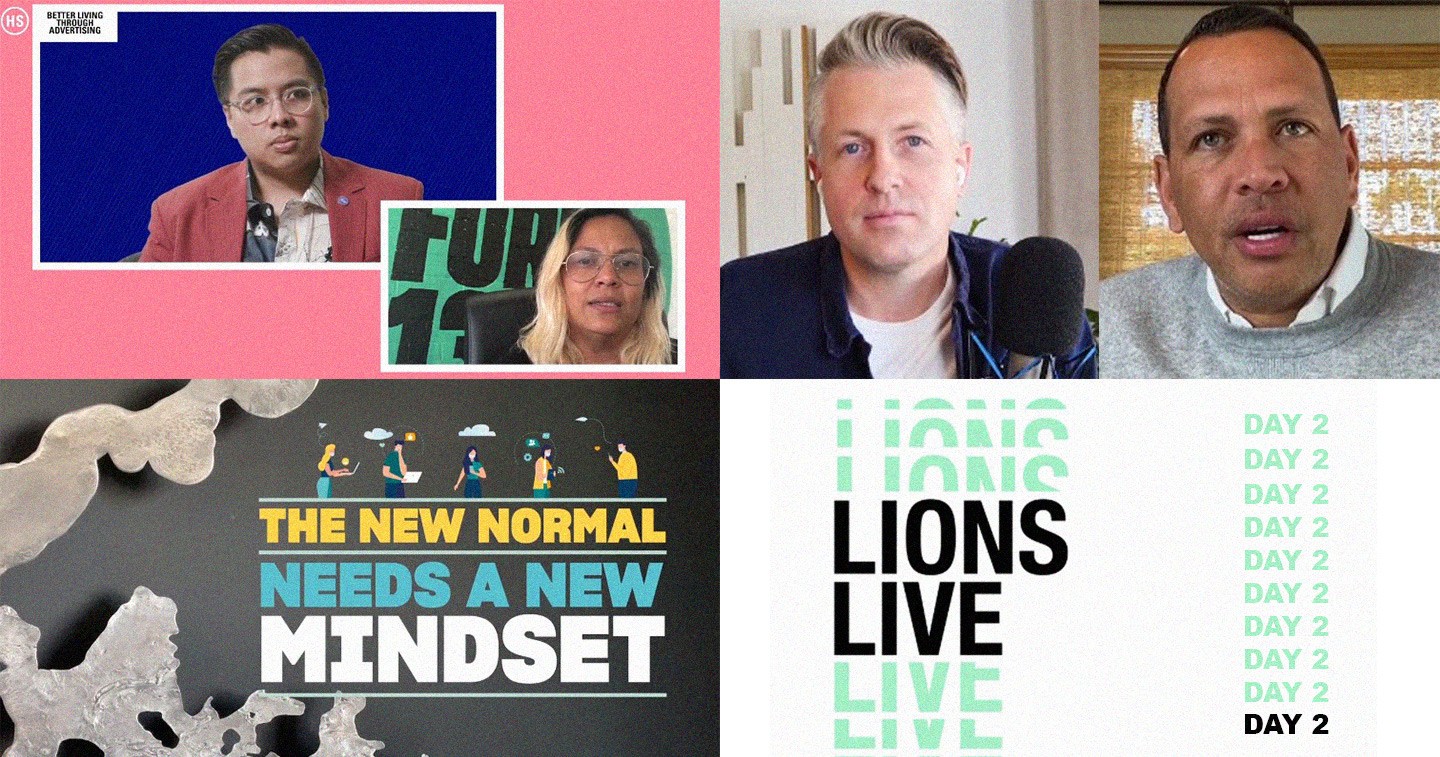GLOBAL – LIONS Live continued on Day Two, June 23, with an agenda of curated content delivered by A-list talent, business leaders and creative legends.
Highlights from Day two:
During INTER:Sect & Icon Mann’s session, challenging questions were asked like how can consumers trust brands now, when black people and people of colour have been crying out for justice for generations? How true and sincere are these declarations of solidarity with Black Lives Matter in practice? How willing are companies to take responsibility for perpetuating white supremacy? NFL player and activist Michael Jenkins believes corporations need to sit and listen, and learn what’s going on, while civil rights attorney, Benjamin Crump, added: “Corporate CEOs and execs need to empower black people to be the gatekeepers in their corporations.”
Highsnobiety’s ‘Better Living Through Advertising’ set out to prove that “cultural marketing” is really just marketing. Founder of Platform 13, Leila Fataar, advised that the key to being able to create something amazing is working with the people you are trying to talk to. Fataar said: “They are the ones who should be with you co-creating. It’s not about bringing people in at the end, they’ve got to be there at the ideation stage.” She added, “Culture marketing is about those nuggets of gold which you only know about if you’re part of it.”
On the first day of the virtual festival, Cannes Lions announced the launch of Classic, a curated collection of the very best Lion-winning work, spanning from the dawn of the Festival in 1954 all the way through to 2000. Classic, which is in partnership with Facebook, is available to access for free on the Lions learning and intelligence platform, The Work.
Also announced:
- The launch of a Classic documentary which is available to view here
- Social Challenge Recreate Classic for 2020 competition
- Donate work to Classic
- Intelligence and learning platform, The Work, has been made complimentary from 22-26 June
Today’s Creativity Report of the Decade winners are as follows:
Regional Agency of the Decade – Latin America
- 1st place: AlmapBBDO São Paulo
- 2nd place: Ogilvy Brazil, São Paulo
- 3rd place: VMLY&R São Paulo
Regional Agency of the Decade – Pacific
- 1st place: Colenso BBDO, Auckland
- 2nd place: Clemenger BBDO, Melbourne
- 3rd place: Leo Burnett, Sydney
Day three sessions to watch out for:
12:00 – 12:45 (BST) Project Everyone Presents activism actually, with Richard Curtis and friends
Talent: Richard Curtis, Emtithal (Emi) Mahmoud, Vanessa Nakate, Trisha Shetty, Amika George, Matthew Freud, June Sarpong, Nico Rosberg, Colin Butfield, Brooklyn Youth Chorus
Category: Keynotes
12:45 – 12:50 (BST) Whalar Presents Creators for Change: The Power of Creativity
Talent: Whalar
Category: Lions Shorts
13:55 – 14:05 (BST) At Home With… Emily Ratajkowski
Talent: Hyla, Emily Ratajkowski
Category: At Home With….
Don’t forget to register for LIONS Live to be able to add sessions to your calendar as well as receive update








